Eight years ago, game critic Joseph Anderson released a video titled Breath of the Wild - Not Enough Zelda. In it, Anderson makes the case that many have since made: BOTW is an excellent videogame, but it isn’t much of a Zelda.
Fourteen years ago, Australian developers Team Bondi partnered with Rockstar Games to release L.A. Noire. Unlike the aforementioned title, this is a standalone game, but it is also a videogame homage to a movie genre that defined cinema for decades: the Noir. And unlike BOTW, it doesn’t stray from its roots to innovate, it does so to remind us that it was released in the peak cover-shooter era.
I’m (shamelessly) naming my essay as an homage to Joseph Anderson’s fantastic video, but I’ll let you know in advance that I’m a much worse writer than he is. Thankfully, he never wrote an essay on L.A Noire, Noah Caldwell-Gervais’ review is ten years old, and Tim Roger’s recently released behemoth is nearly ten hours long, so I’m hoping to fill some kind of niche amongst these titans. I intentionally saved both these reviews to watch after I was done writing mine, so if you find any similarities, thank you for the compliment!
This L.A. Noire Review is the first entry in my Steaming The Deck column, a non-scheduled series where I cover neglected titles that have been collecting digital dust in my Steam library for far too long, using my recently purchased Steam Deck as a perfect excuse to finally give them the love they deserve.
All Steaming The Deck reviews are littered with spoilers, so if you haven’t played L.A. Noire yet and are in the least bit interested, please go buy it, play through it first, and then return. This essay isn’t going anywhere.
Case One- Persons Of Interest
You spend the overwhelming majority of your time in L.A. Noire playing as Cole Phelps, an insufferable protagonist that feels like a parody of the “good, honest cop” trope. Luckily, that’s because he is. As Cole, you’ll go through five desks, five cars, five outfits, and five partners. You’ll also go through one hell of a character arc, transforming him from an insufferable trope into an eerily human person.
While his partners seem to care for little more than their booze, Phelps is always looking for the bigger picture, searching for the grand conspiracy. He’s also always fishing for the next promotion. Civilians and colleagues that you cross recognize you. “Isn’t that the guy from the paper that solved crime X or Y? I heard he is a good cop”, they say. Finishing the Homicide desk cases brings us to Vice, with the venomous company of Roy Earle, a nearly comedically corrupt cop.
Roy Earle serves initially as an inverted mirror to Phelps. The game seems intent on telling you that here’s a guy that doesn’t seem to have a care in the world, appears to be on good terms with most of the big fish that should be his department’s main targets, and has gotten as far as war-hero, honest, good cop Cole. Before you know it, though, the curtain is unveiled a bit more, and you figure out that the mirror wasn’t inverted in the first place. These two are more similar than we thought.
You finish the Vice desk by being exposed as an adulterer— a reveal that would’ve been more impactful if we had seen Phelps interact with his wife and daughters at all prior to this—, demoted, and blocked from pursuing the case that was implicating some of the biggest names in the city, including William Worrell, the LAPD Chief of Police.
This demotion brings us to the Arson desk and the wonderful company of Herschell Biggs, the closest thing L.A. Noire has to a good cop. Biggs is jaded, does not give a damn about Phelps and his ambitions, and simply wants to complete his cases. He is an older cop with an iconic voice and a good heart. When L.A. Noire takes a turn to a much more serious tone, showing entire families burnt to a crisp, children included, Biggs drops his “tough-guy who doesn’t care” act and appears genuinely distraught.
While all this unfurls, Cole Phelps remains more focused on uncovering the conspiracy behind it all. The turning point in his character arc comes when he asks Elsa Lichtmann, his mistress and beautiful singer from The Blue Room jazz club, to bait Jack Kelso into becoming attached enough to the case to not give up until it's fully cracked.
For the first time in his LAPD career, Cole shows that his true intent is on cracking the case, and not on winning another promotion. We’ve seen Kelso through the many flashback cutscenes that the game has shown us of World War II, but we only really get to know Jack when we wear his shoes.
When we reach the end of the Arson desk and, consequently, of L.A. Noire, we get the whole picture. Cole Phelps isn’t just an adulterer that apparently abandoned his two daughters following his affair, he is also a “war-hero” off of stolen valor. Not only did he not deserve the coveted Silver Medal, he issued an order that got dozens of children and women killed in a Japanese hospital hidden inside a cave, which traumatized the soldier that had to make the order a reality.
That soldier, Ira Hogeboom, was the perpetrator of the fires that got entire families killed, under the control of Harlan Fontaine, the doctor behind the Morphine epidemic that marked our entire time in the Vice desk. Furthermore, the Morphine affair begun when the remainder of the squad of USMC soldiers, who witnessed Cole’s horrific decision in the war, decided to find their own dishonest way of earning something, partially motivated by the rage of having to hide the truth while Phelps basked in the glory of being a war hero.
As the game comes to a close, Cole Phelps sacrifices himself to save Herschell Biggs, Jack Kelso, and Elsa Lichtmann, completing his redemption arc. Kelso puts Ira Hogeboom out of his misery, forfeiting any chance of having a case that could’ve exposed the corruption above. The final cutscene plays during Cole’s funeral, with the ever-smug Roy Early giving his eulogy, with the corrupt LAPD roster of higher-ups sitting behind him.
L.A. Noire leaves you with a distinctly Noir feel. There are no true heroes in the story, there are no real conclusions, much less a happy ending. The game’s most realistic part really is its story, which is painfully believable. It is also its best characteristic, which concludes the first part of our investigation.
Case Two- Technology
Despite being fourteen years old, L.A. Noire remains a technological marvel. I can’t fathom what playing this game in 2011 might’ve been like. The motion capture technology can get finicky at times during interrogations, but it holds up and can look impressively realistic during cutscenes.
Voice acting is top notch, music and audio are immaculate, and the attention to detail is impressive. Cole Phelps picks up his hat if he dropped it during a melee brawl or a gunfight. Cars get out of your way if you have your siren on, pedestrians jump out of your way if you are coming into a crosswalk too fast. Team Bondi and Rockstar managed to create a world that, despite not being a sandbox or meant to be carefully explored, feels alive.
Mirrors are fully reflective and, despite the low-res textures, the game still looks good, especially in darker environments. The in-world menus, namely the world map and Cole’s notebook are a fantastic touch and one that has aged beautifully.
Animations are top-notch, especially when walking or running up and down stairs. Driving is fun, shooting is fine, and the investigation sequences work great. All audio cues can be turned off if you want to be fully immersed, but they didn’t bother me.
Case Three- Noir
Down to its title, L.A. Noire screams “Noir Homage” with a subtlety reminiscent of Rusty Galloway’s rampant misogyny. It follows the path of a cop through the muddiest parts of the town, slowly revealing pieces of a complex puzzle before showing you that the image in the box was actually upside down. So, after spending around twenty hours in the game, why was I left wondering where all the Noir had gone?
As I was playing through the first two desks of L.A. Noire, I was expecting a gradual increase in the number of clues, persons of interest, locations, and questions, accompanied by dialogues that were tougher to read and puzzles that required a bit more brain power. I did get the latter two predictions right, often feeling a bit dumb in the process, and on occasion slapping my knee after getting a question wrong. Those were the best parts of the game.
The other parts of L.A. Noire that genuinely got me hooked were the ones where I was frantically moving my wrist around looking for meaning in every little object found in a crime scene, walking around houses waiting for the satisfying sound that plays when you bump into a new clue, loving the banter between partners, and conversations with Ray Pinker and Carruthers around impressively realistic cadavers.
So I was happy when I saw the game giving me more of what I wanted. By the time I got to “A Split Of The Tongue”, the third Traffic case, I had to find eighteen clues in seven locations and ask six persons of interest twenty-one questions. For reference, the first case in the game, “Upon Reflection”, had four clues, three persons of interest, and three locations. We were headed in the right direction, or so I thought.
Case Four- Missing In Action
Yet, as I reached the end of my time in the LAPD as an Arson detective, I found that I’d hit the peak all the way back in Traffic and Homicide. A couple of cases kept me happy with a lot of clues and a few P.O.Is, but most kept people to a minimum and interrogations as a side-thought, while filling my notebook with locations. What was I doing in them if there were no clues to be found or P.O.Is to interview?
Most cases in the latter parts of the game inevitably lead to some sort of shooting gallery with a panoply of pillars for cover, a variety of weapons to find that all worked the same way, and a chase or two in between, be it on foot or by car. Rockstar Games might’ve excelled at third person shooters back in 2011, and they still do to this day, but it is obvious that Team Bondi weren’t as versed in the lingo, neither did they need to be.
Here’s where I press the Lie button and present the following evidence from my notebook: L.A. Noire would’ve been a better game if 90% of the shooting galleries and 65% of the chase sequences were removed. They serve no purpose in the narrative, and the game knows this. If you failed them a few times, L.A. Noire asks you if you want to skip the “action sequence”. Yes, I want to skip all action sequences, ever!
Why would I want a cover-shooter in my slow, methodical, immersive, realistic investigation game? Why does fake-war-hero Cole Phelps turn into the goddamn Terminator when a cutscene leaves me holding my gun while hiding behind a pillar? This guy single-handedly takes down armies of goons with a Colt .45 handgun while never even considering calling for back-up.
If Rockstar Games and Team Bondi were afraid that players might’ve gotten bored without getting their fix of action every two hours, why would they release a Noir in the first place? Noir movies have famously been slow-burners, often quite long for the period of time in which they were released. Westerns were simultaneously available for those looking for their next action fix.
In the same vein, anyone looking for a great cover shooter back in May 17, 2011 could’ve just played the excellent Uncharted 2, or waited a few more months for the third entry in the series.
Case Five- Looking For More
Despite having dedicated an entire case to criticizing L.A. Noire, I treasure my time with it and genuinely loved the main narrative. It felt real in a way that’s rarely achievable, filled with people that seemed truly made of flesh, bone, and souls. I won’t forget Cole Phelps, Herschel Bigs, Roy Earle, Carruthers, Jack Kelso, or Elsa Lichtmann any time soon. And if I ever do, I’ll make sure to put my fedora back on and get to work again.
Above all else, I left L.A. Noire wishing for more, and wondering why we haven’t seen remakes, spiritual successors, or outright copycats. While we waste our time remastering Horizon Zero Dawn seven years after its release, or remaking Dead Space while barely changing anything (why fix what isn’t broken?), we’re ignoring the fact that motion capture technology has reached an entirely new level in recent years — Hellblade II: Senua’s Saga, Death Stranding, Red Dead Redemption, God Of War— and that we’re sorely lacking a classic detective game.
Frogwares keep going strong with their Sherlock Holmes adaptations, but they’ve taken it into Lovecraftian fantasy territory, which is cool. Yet, I just want to grab a notebook, look for clues while bantering with my partner, and interrogate suspects with facial expressions so realistic that I might physically punch my monitor if someone like Roy Earle shows up.
As I was playing through the game, I kept thinking that there was not enough Noir. Now that I’m done with it, I can’t help but feel like there’s not enough L.A. Noire.




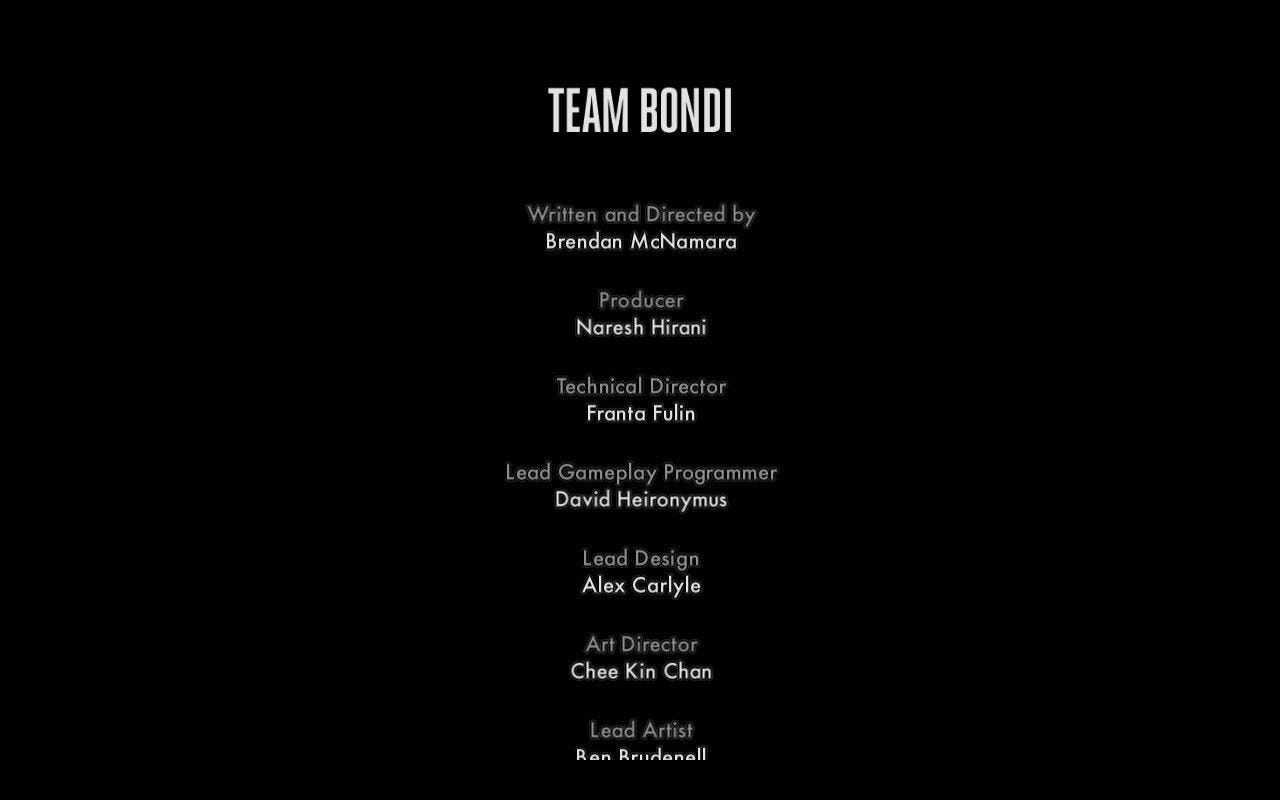
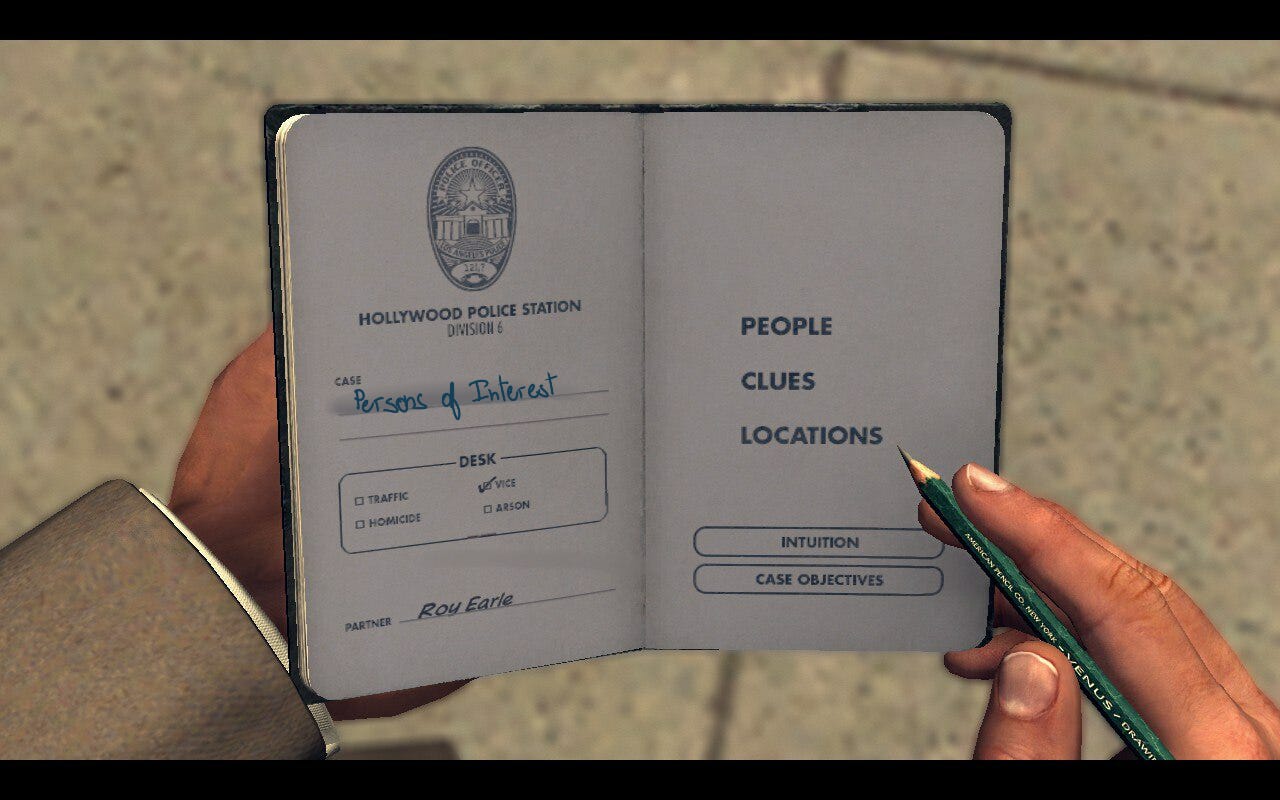
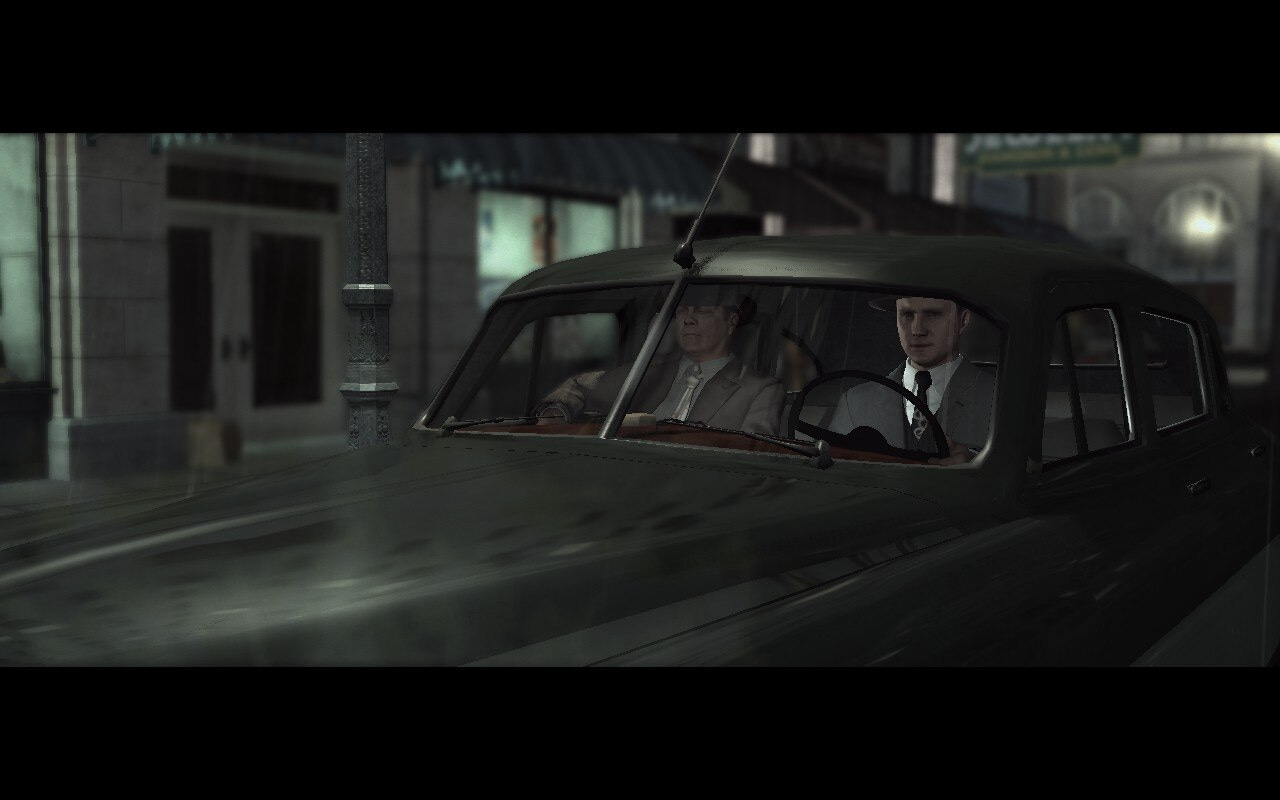

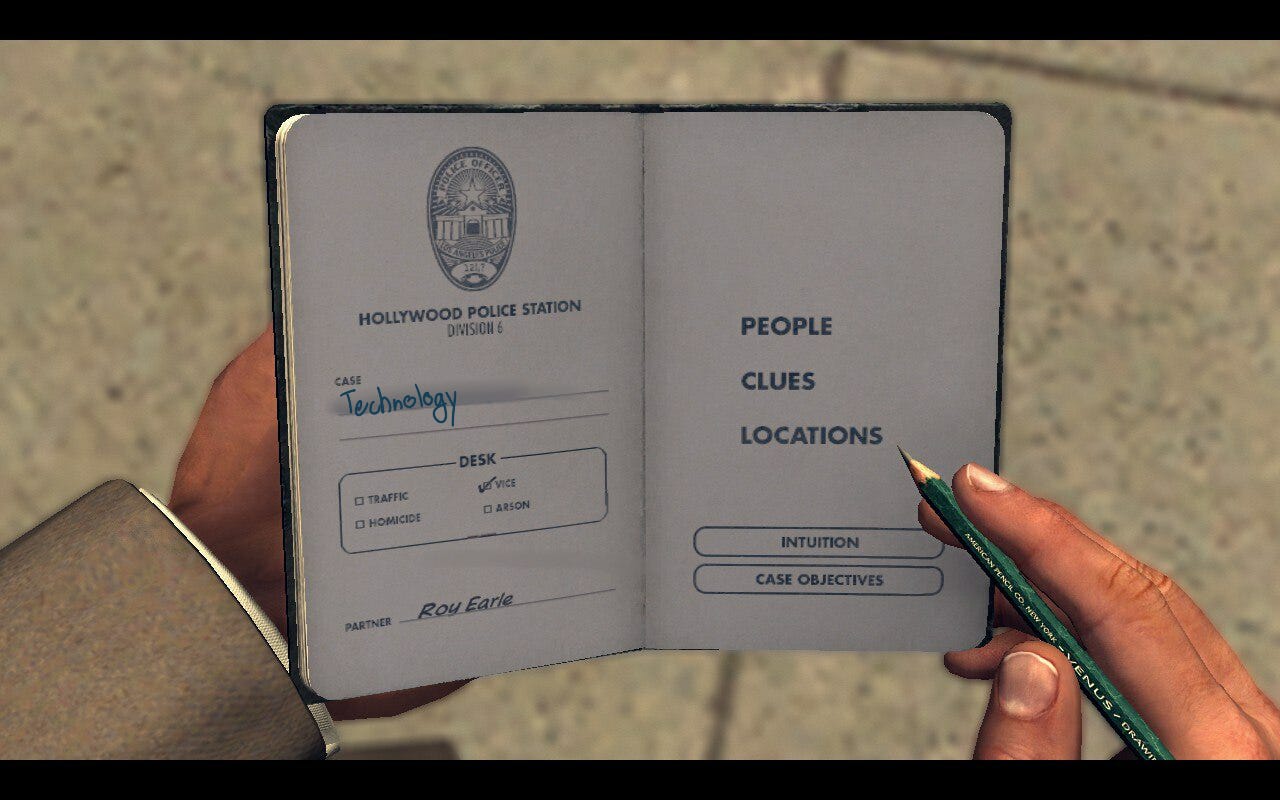
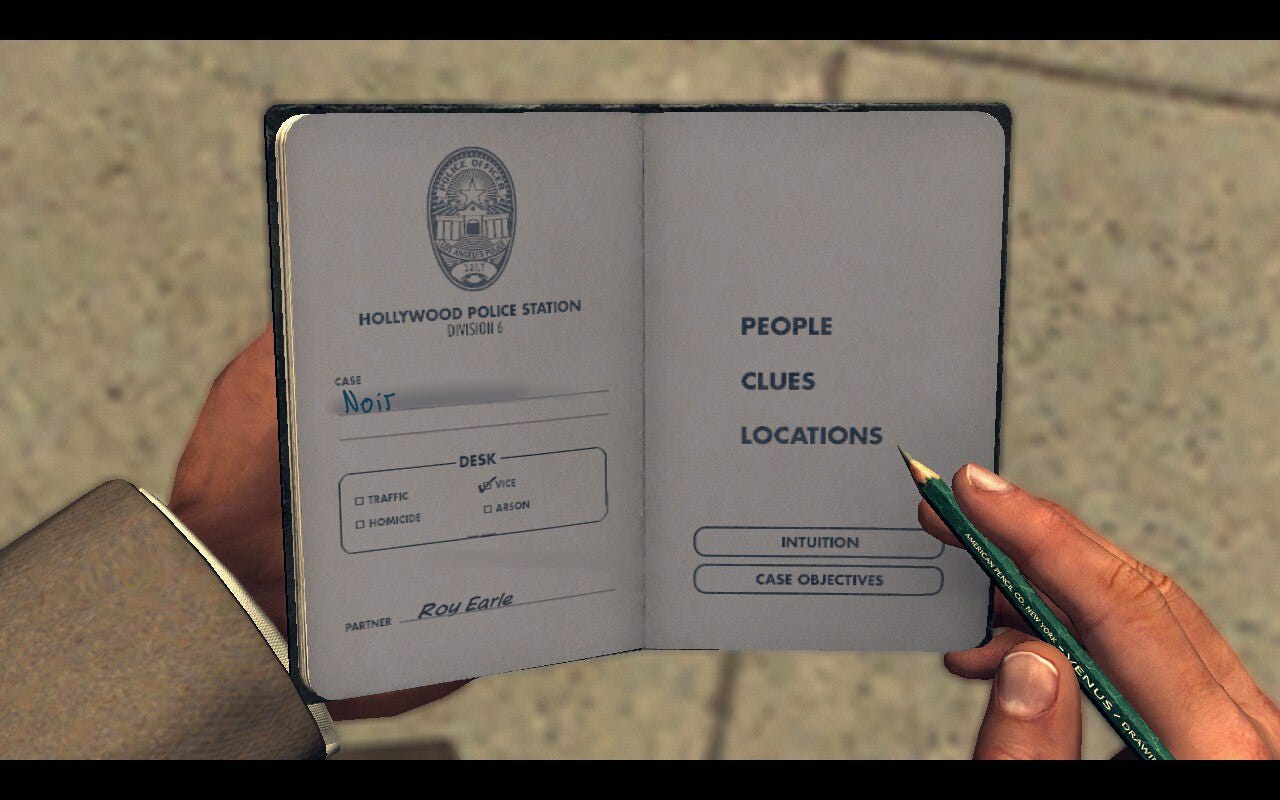

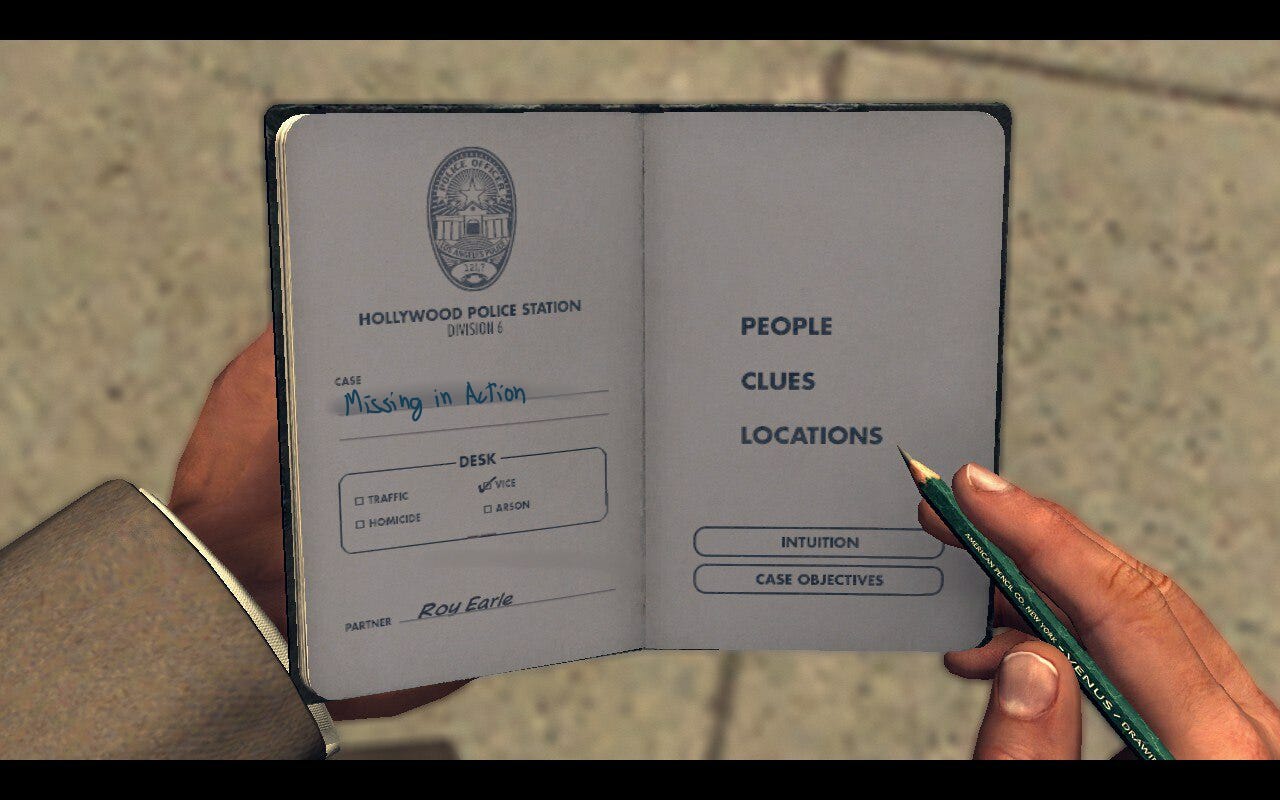
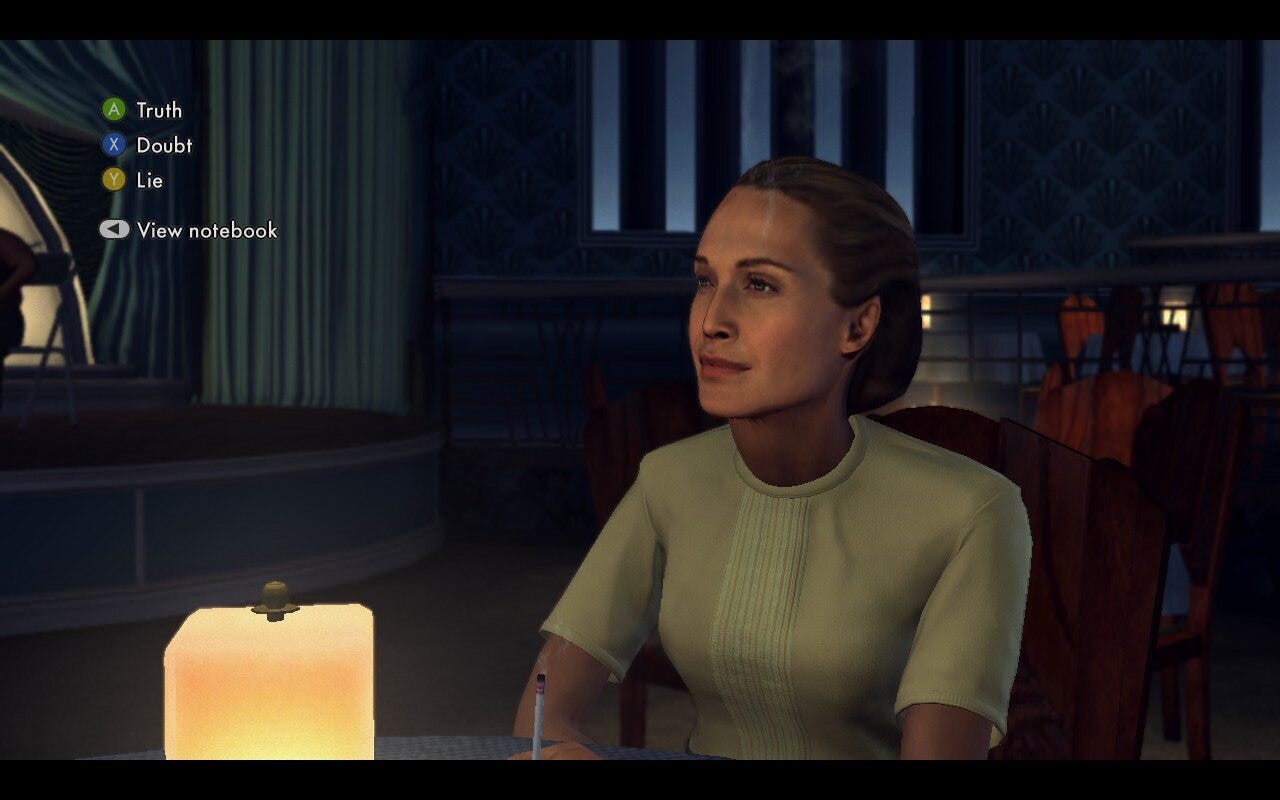
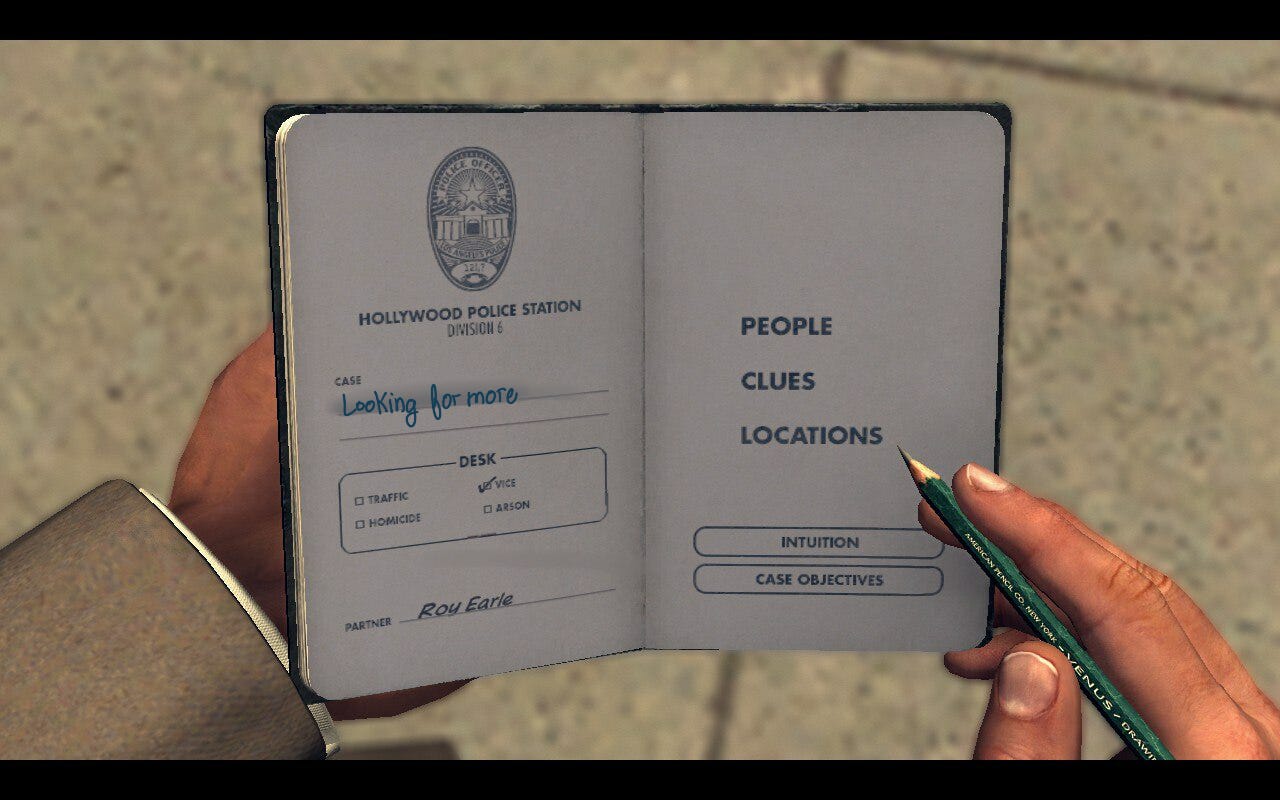

Good write up, great last line.
I would love for an LA Noire sequel. The game taught me to study people's faces and I still use things I learned on daily converstations